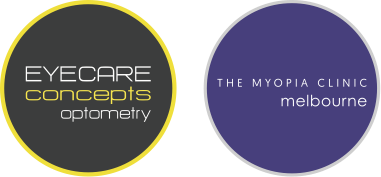MYOPIA CONTROL
控制兒童近視加深
What's myopia control?
|
Myopia control refers to methods and strategies used by eye care professionals with the aim of controlling the deterioration of vision in a child or adolescent with myopia progression. You can think of it as ways of preventing your child’s eyes from getting worse.
To fully understand what myopia control means, let's first learn a little more about myopia. |
What's myopia?
|
Myopia is commonly referred to as short-sightedness, or near-sightedness. Sometimes the wording seems confusing. Short-sightedness means a person can see clearly up close, at short distance, but has blurred vision far away in the distance. A child with myopia tends to have trouble seeing the whiteboard at school, watching TV and movies, and generally anything further away. The higher the level or degree of myopia, the more blurred the individual's far distance vision is.
Often people think of short-sightedness as just needing to wear glasses. While glasses are the most common way of correcting eyesight, by re-focusing light in the eye, glasses only temporarily mask the symptoms and do not address the underlying problem. A myopic eye — an eye that is short-sighted — is physically elongated, stretched longer than a normal eye. The internal sensory layers of the eyeball are stretched, like an elastic band that's been pulled taut, under tension and at higher risk of breakage. Myopia is not just a matter of wearing glasses. It's a children's eye health concern.
Myopia is about eye health.
The average adult human eye has an axial length — that is, the length of the eyeball from the front surface to the back — is around 23.3mm. An eye with greater than -6.00 degree of myopia has an axial length of 26.5mm or more. Although 3mm doesn't sound like much, that increases the risk of myopic macular degeneration by 41 times, retinal detachment by 22 times and glaucoma by 14 times. These are all eye diseases with the potential for blindness.
|
|
Why myopia control?
Who wouldn't want their child to have healthy eyes and good sight? We only have one pair of eyes, after all, and our sight is so precious. While previously it was accepted as normal for a child with myopia to have their eyes worsen each year naturally, that no longer needs to be the case. Think about not only in the present, but when your child is 30, 40, 50 and beyond. Myopia control reduces your child's risk of developing the aforementioned sight-threatening eye diseases.
The aim of myopia control is to help prevent your child from developing 'high myopia'. High myopia is defined by the World Health Organisation as short-sightedness with a glasses prescription, or refractive error, of -5.00 or over. The higher the level of myopia, the exponentially higher the eye health risks. Many children today already short-sighted from a very young age and we often see them progressing rapidly by -1.00, -1.50 or more per year. At that rate, it doesn't take long for the child's eyes to reach irreversible high myopia. Younger children (age 8 and under) are also at higher risk as there is more time for their eyes to worsen. Pathological myopia of -10.00 or above is a real possibility for some children if they do not have myopia control. Myopia control also helps your child avoid wearing thick and heavy glasses in their lifetime. As their prescription increases, their lenses get thicker. Thick glasses are not only uncomfortable to wear but cosmetically unattractive. Keeping your child's prescription to a lower level gives them a wider range of vision correction options later on as an adult. |
Is myopia control only available to children?
|
Myopia control strategies are evidence-based for young children through to teenagers. Many adults also develop short-sightedness with distance vision blur, and some even progress significantly and rapidly, but it is believed that adult-onset myopia is due to other factors related to the eye's focusing system and not related to eye growth, as natural growth of the eyeball usually stops by age 18-20.
Our myopia management program is, therefore, focused on children and adolescents whose eyes are still in the growing phase. However we can certainly assess adults whose vision is still deteriorating well into their 20s and can give recommendations on possible ways of reducing their adult myopia progression. |
Why haven't I been told about myopia control before?
|
There's a variety of reasons why your eye care practitioner may not have told you about myopia control before. One is awareness of such treatments and their effectiveness. Many optometrists simply lack knowledge of new developments in eye care treatments in relation to myopia management. Some optometrists, particularly those in retail optical shop settings, may consider myopia control to be too time-consuming and prefer to take the easier approach of prescribing and selling regular glasses and contact lenses. Some, perhaps for commercial reasons, may not discuss myopia control as not to lose potential glasses sales when a child's prescription increases every 6 to 12 months.
Here at the Eyecare Concepts Myopia Clinic, knowing what we know about myopia and what we can do to help your child, we consider it our duty of care that we offer you all the evidence-based options that are available today, so you can make the most informed decision for your child's eyesight and eye health. |
© 2019 The Myopia Clinic | Eyecare Concepts | Kew East Melbourne







